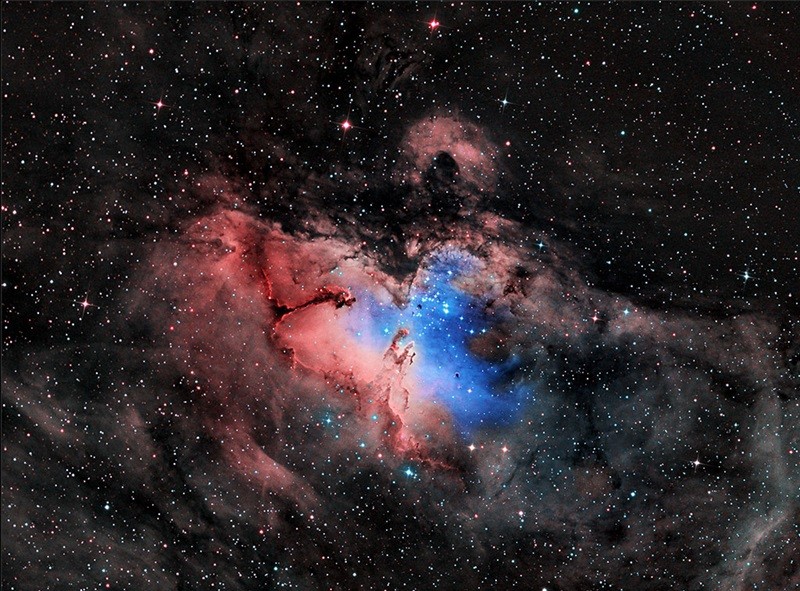
This beautifully (and patriotically) colored image of the Eagle Nebula (Messier 16/NGC 6611) was recently featured as an Astronomy.com Picture of the Day. The heart of the Eagle Nebula contains the famous Pillars of Creation.
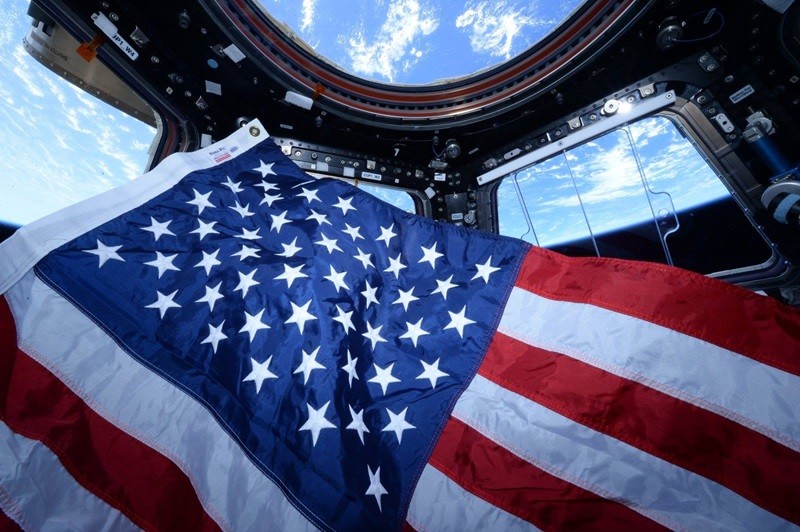
Astronaut Scott Kelly took this patriotic photograph in the cupola of the International Space Station in celebration of Flag Day June 14, 2015.
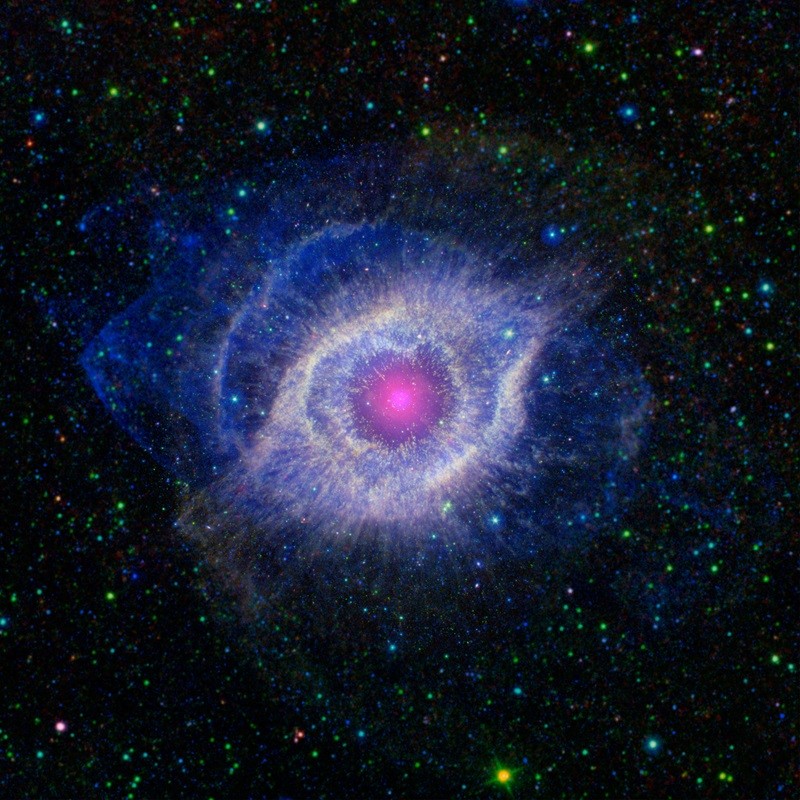
This multi-wavelength image of the Helix Nebula (NGC 7293) renders the planetary nebula, which circles a dying star, in the colors of the American flag.
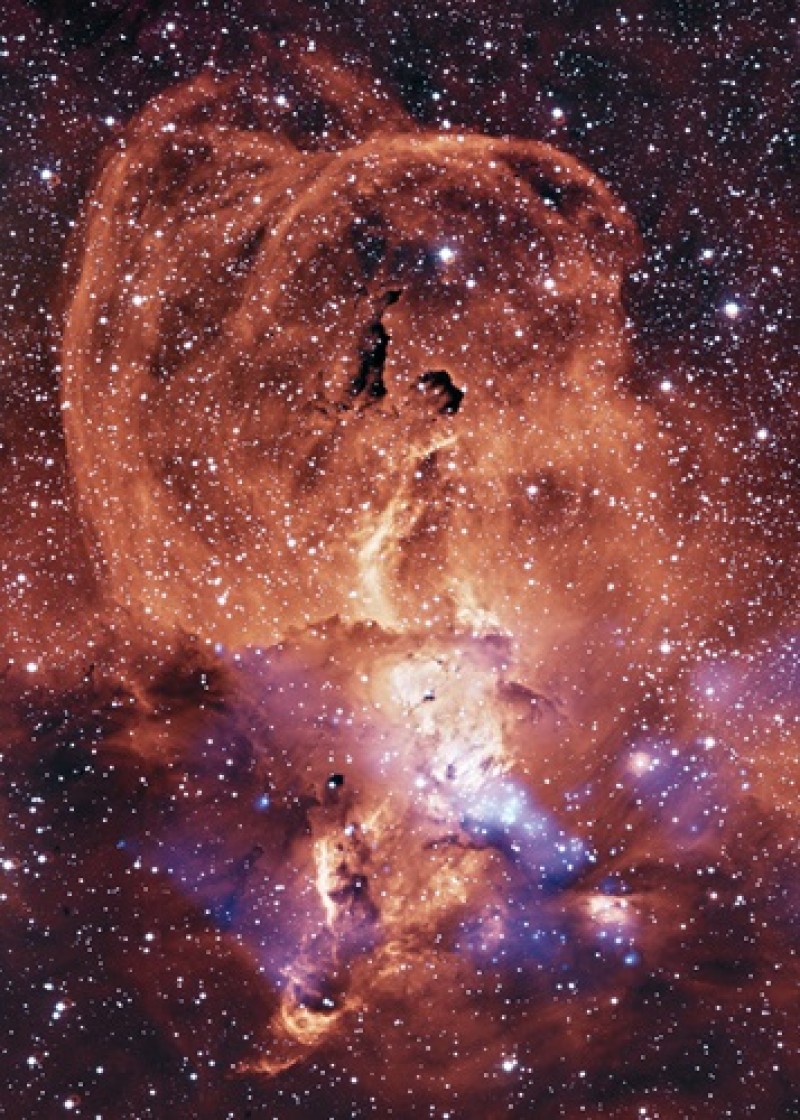
NGC 3576 is also called the Statue of Liberty Nebula; if you look closely, you can see America's iconic Lady Liberty standing tall within its depths.
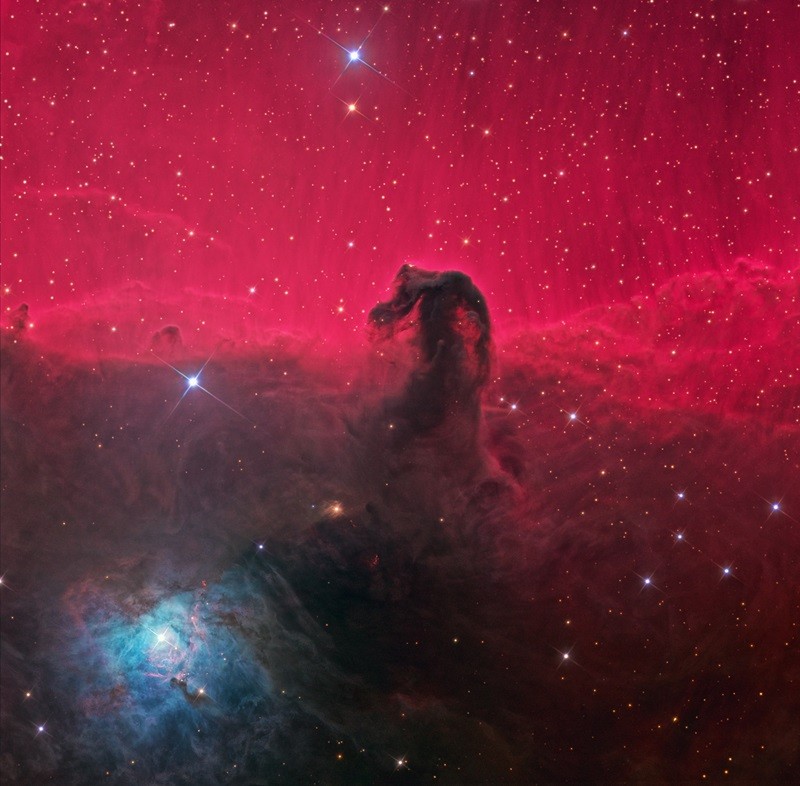
The famous Horsehead Nebula (Barnard 33/IC 434), located in the constellation Orion, is a dark nebula currently undergoing star formation. To the lower left of the easily identifiable Horsehead is NGC 2023, a reflection nebula 4 light-years across.
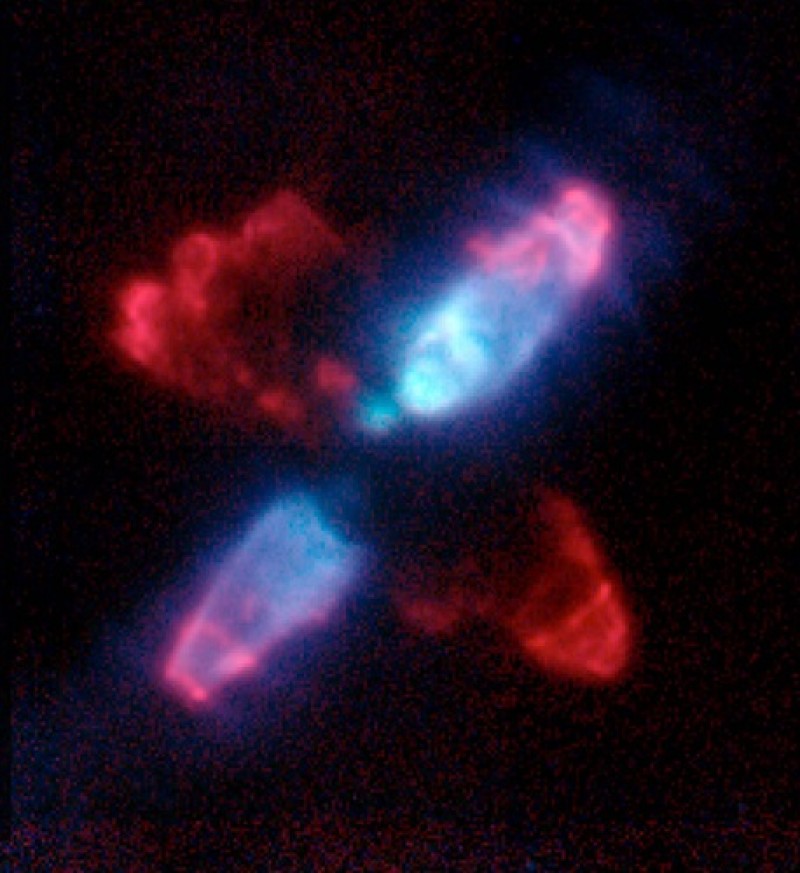
This infrared image of the Egg Nebula (CRL 2688) shows narrow jets shooting into space, ejected from the dying star in the center.
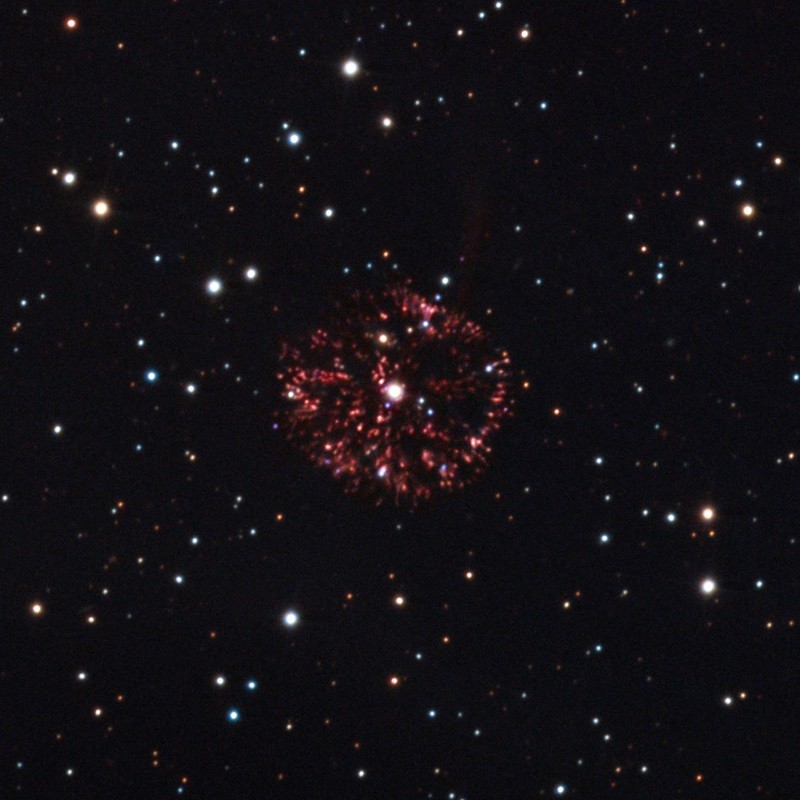
GK Persei, the "Nova of 1901," is also sometimes referred to as the Firework Nebula, given its appearance. This beautiful remnant is actually still active - it is classified as a cataclysmic variable.
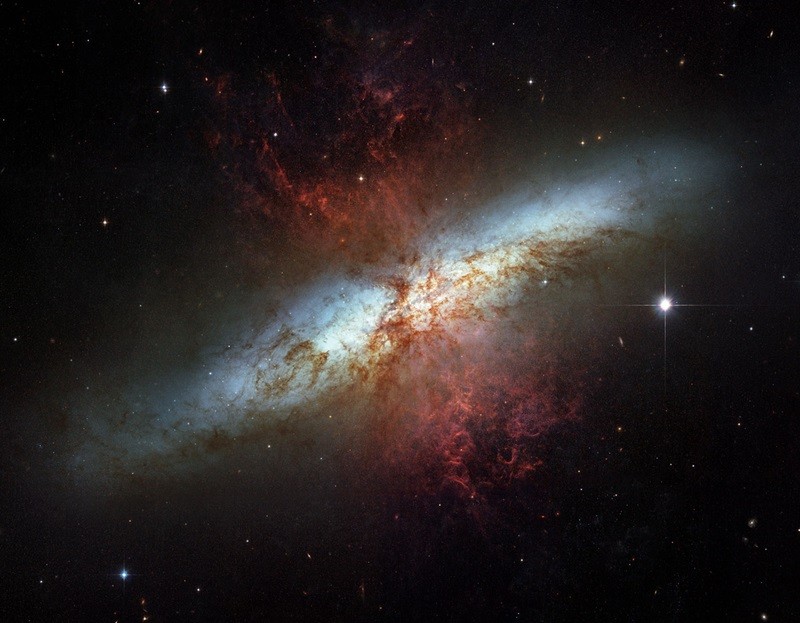
Messier 82 is a nearby starburst galaxy that shows signs of a recent interaction with its neighbor, M81. Inside this disrupted galaxy, stars are forming at a rate 10 times that of the Milky Way's.
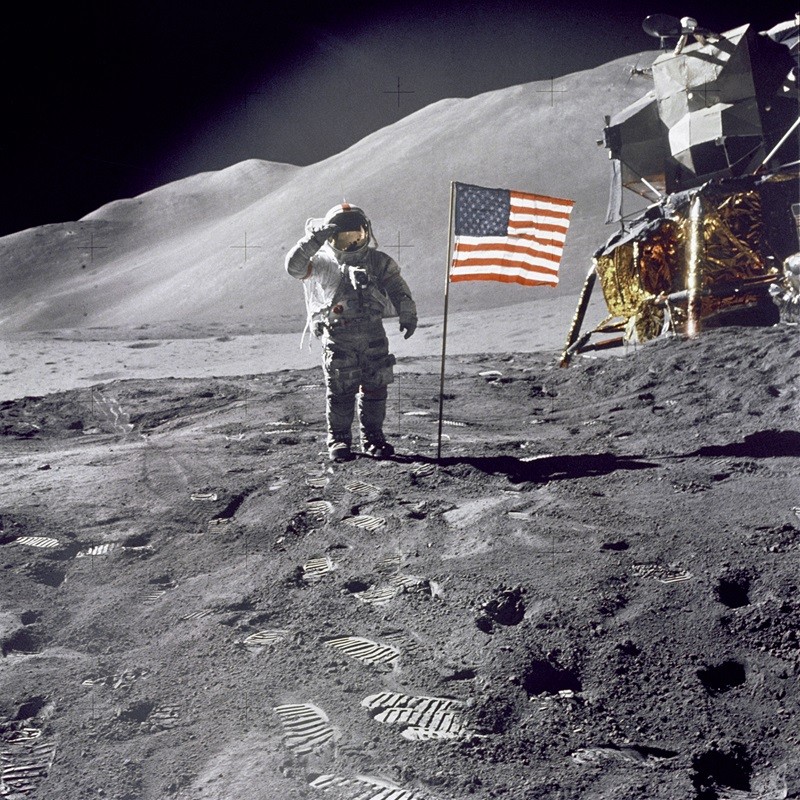
During the Apollo 15 mission, Commander Dave Scott salutes the American flag left on the lunar surface at Hadley-Apennine.
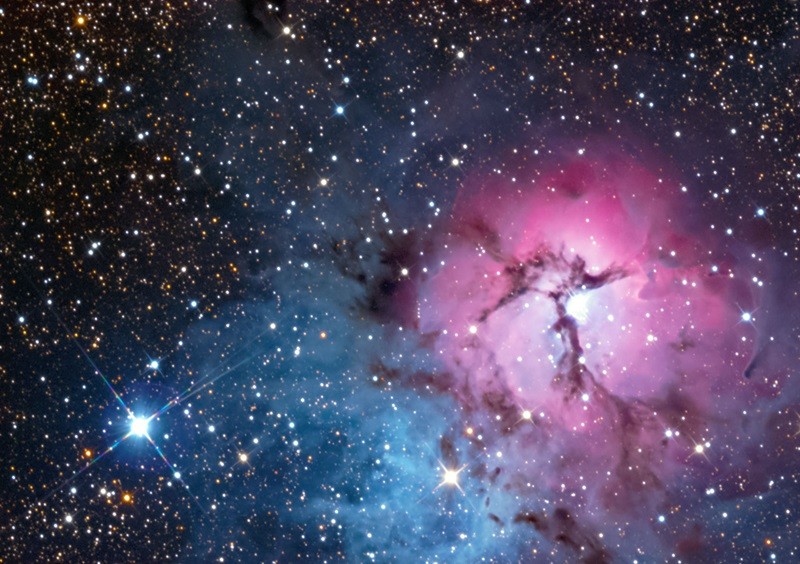
The Trifid Nebula (Messier 20), imaged here in visible light from a small ground-based telescope, is a glowing HII region of gas in Sagittarius.
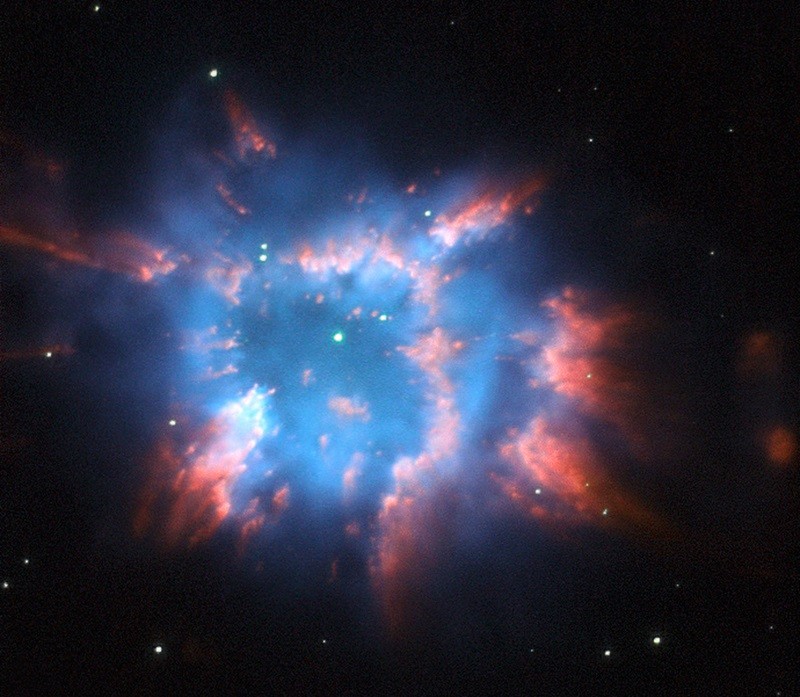
NGC 6326 is a planetary nebula that surrounds a star in the process of ejecting its outermost layers in the constellation of Ara, 11,000 light-years away.
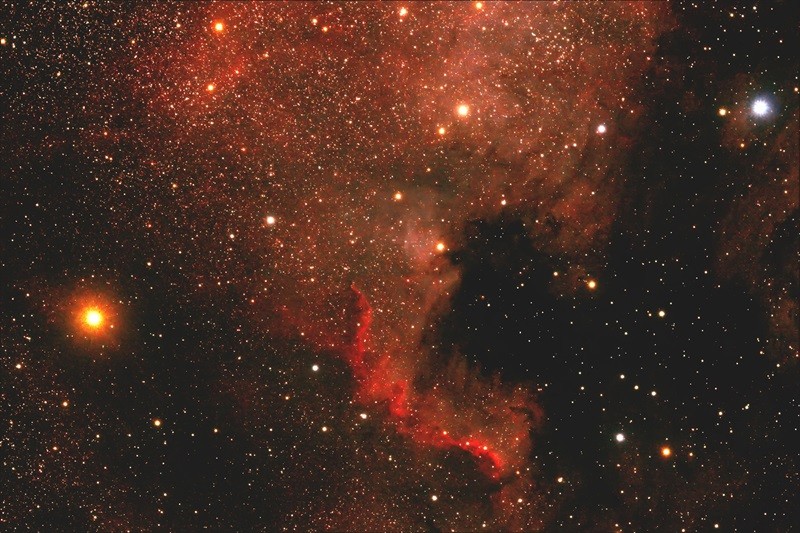
The aptly named North America Nebula (NGC 7000/Caldwell 20) is an emission nebula of glowing gas that is best viewed under dark skies with binoculars or a telescope.
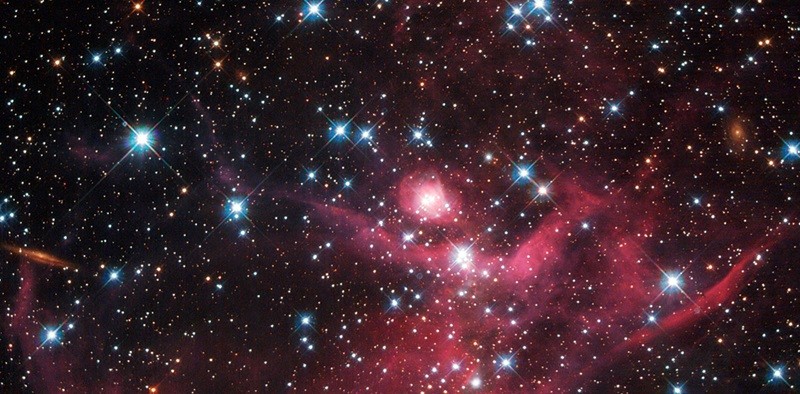
The young star cluster LH63 sits nestled within the larger LHA 120-N 51, a star-forming emission nebula located in the Large Magellanic Cloud.
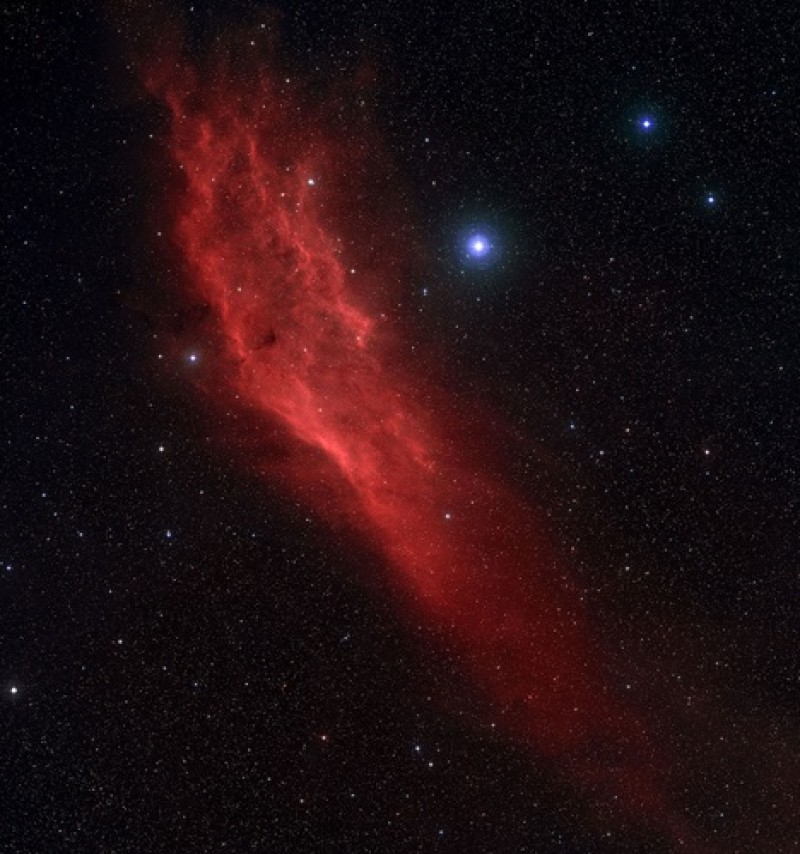
This emission nebula in Perseus has been named the California Nebula (NGC 1499) for its striking resemblance to the state.
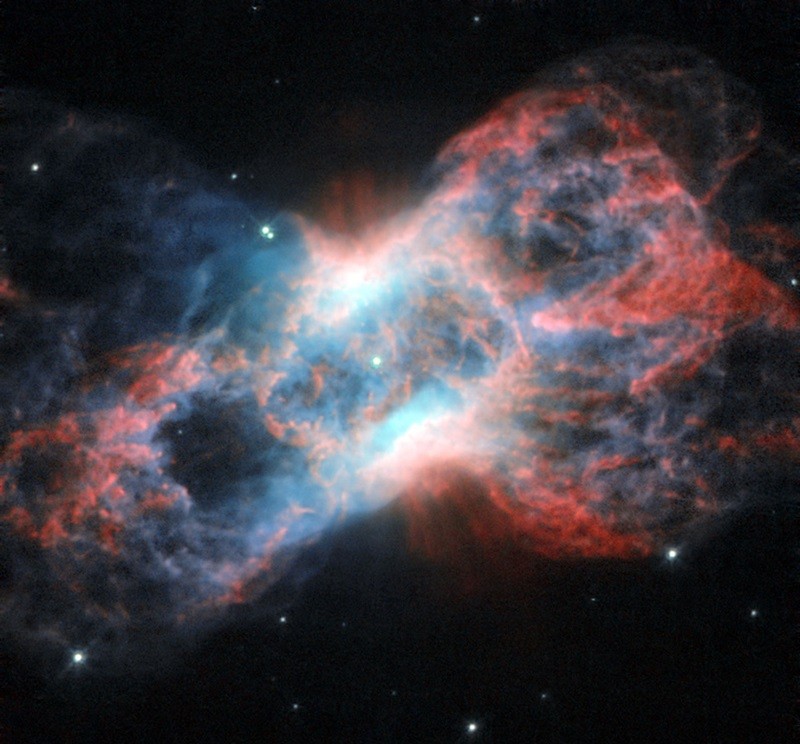
NGC 7026, located in the constellation Cygnus, is a planterary nebula that signifies the late stages of a Sun-like star. In this Hubble Space Telescope image, nitrogen gas appears red and oxygen appears blue.
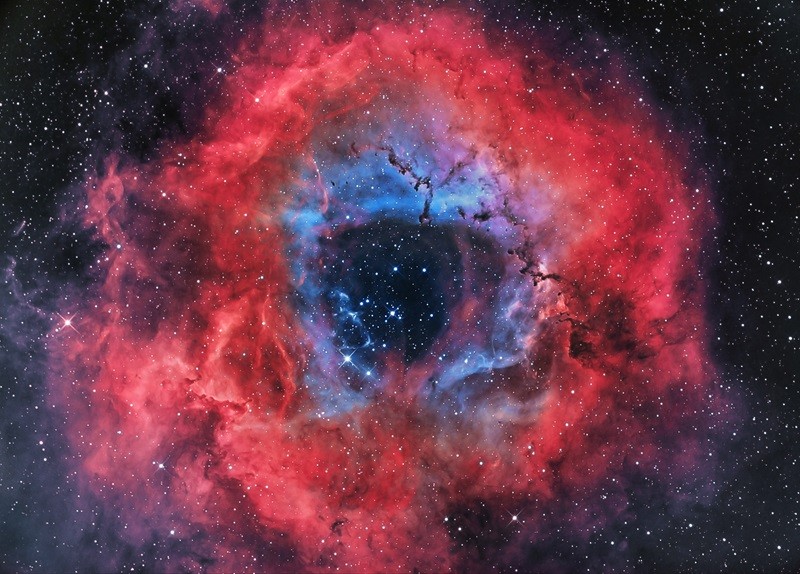
This red, white, and blue image of the Rosette Nebula (NGC 2237-9) was taken in Varna, Bulgaria, with a 12-inch telescope and submitted to Astronomy.com in 2011.
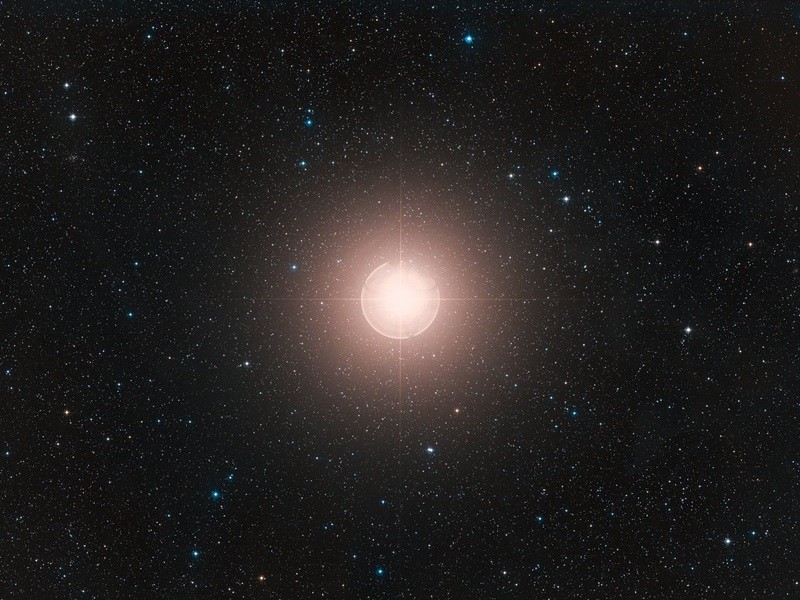
Betelgeuse is a red supergiant star in the constellation Orion the Hunter. This star gleams visibly red in the sky, and will explode in a supernova at the end of its life.
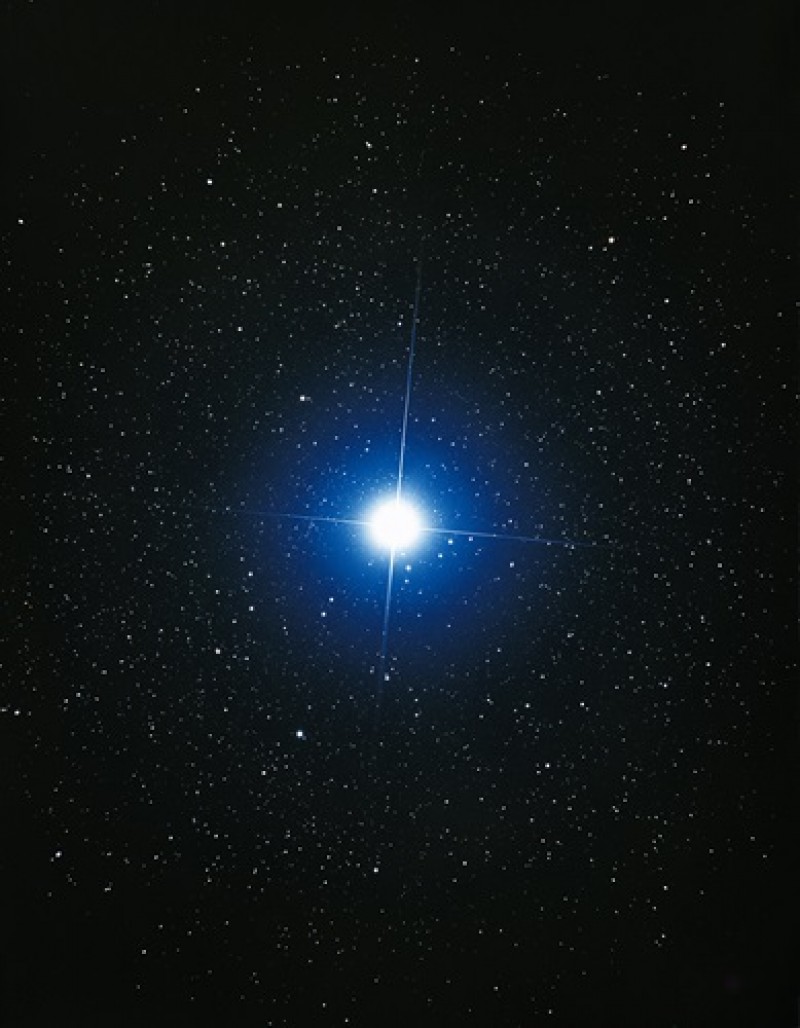
Sirius, also called the Dog Star, is a hot, blue-white star that shines brightest in the Northern Hemisphere sky.
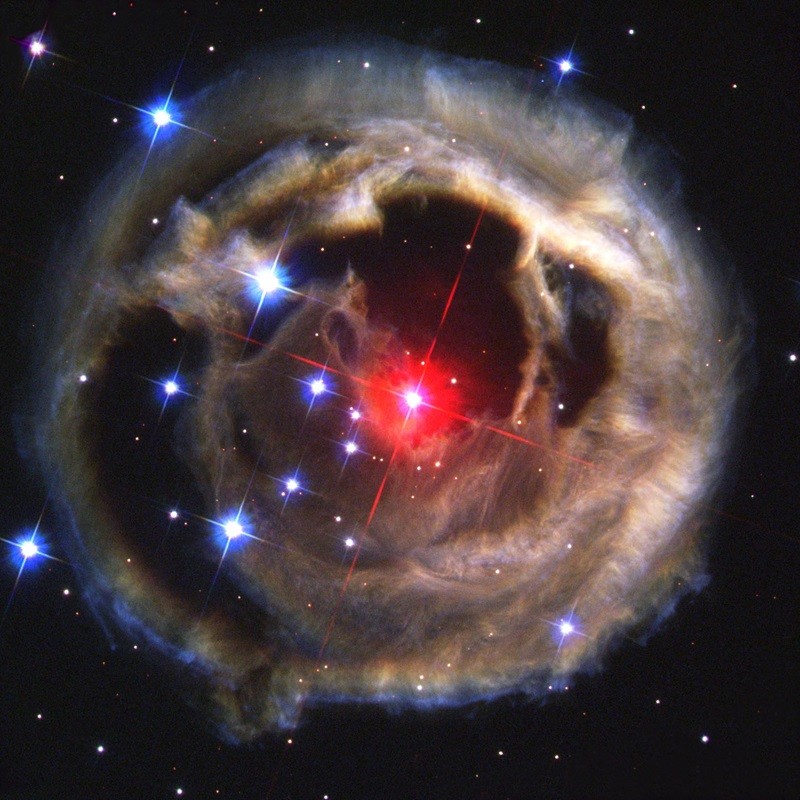
V838 Monocerotis is the red star in the middle of this image. Originally classified as a nova, it is surrounded by a shell of dust and gas that is evolving rapidly.
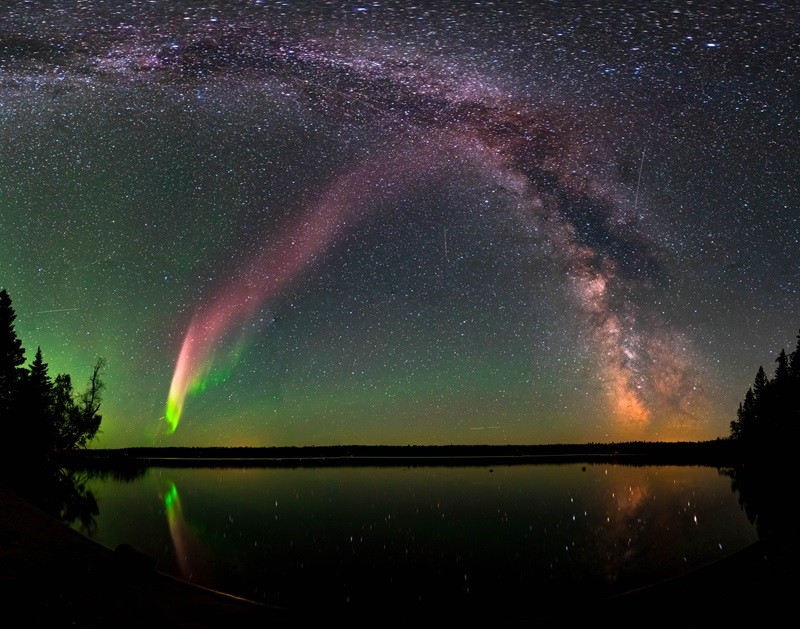
The aurora named Steve appears purple in the night sky. This rare, recently characterized phenomenon shares a name with a famous patriotic comic book hero: Captain America.